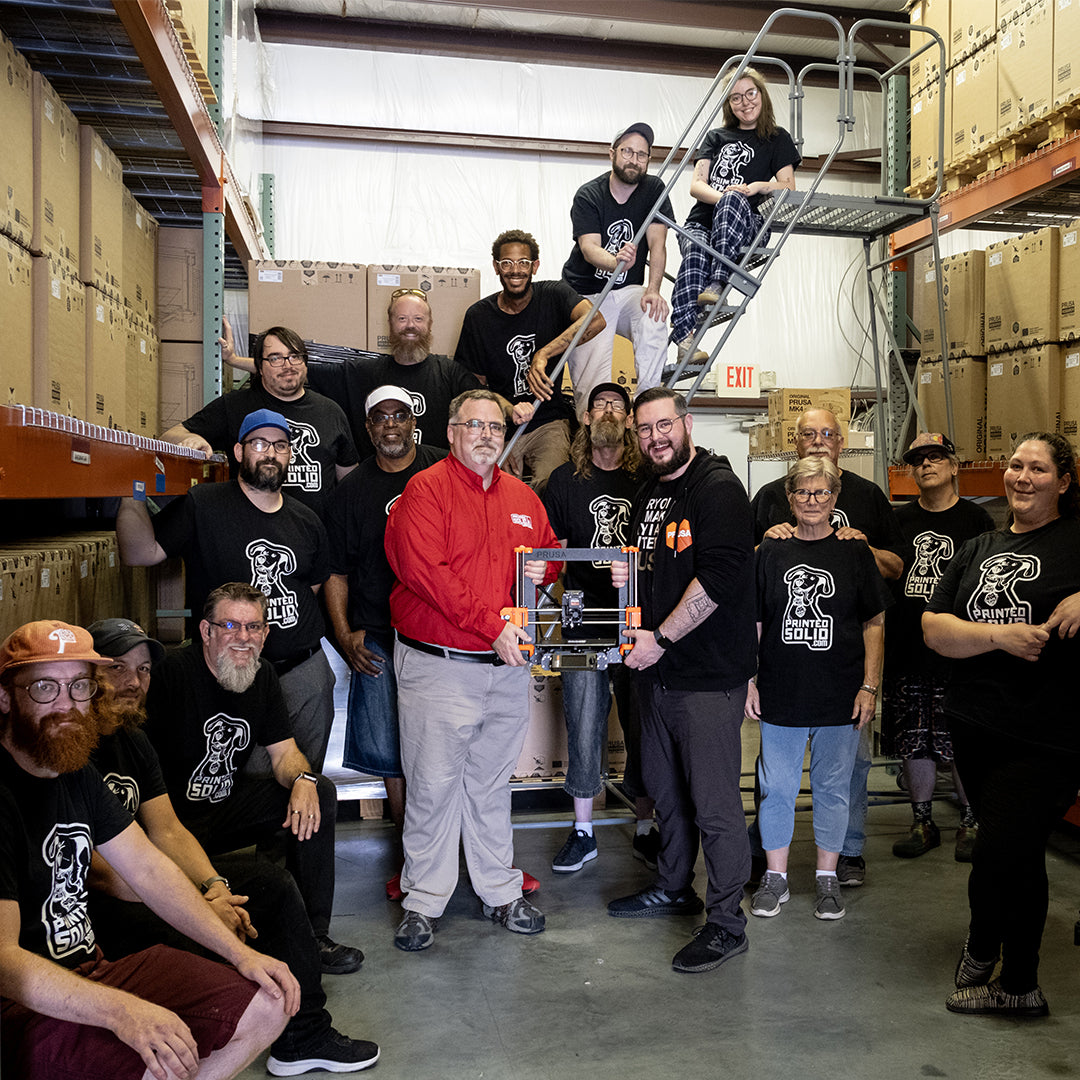
Vapor Smoothing 3D Printed Parts - PLA, colorFabb, XT, T-Glase, PET+
As you've seen in some of my previous posts, I've spent a fair amount of time experimenting with using an acetone vapor bath to smooth 3D Printed parts. Recently, I saw this cool make of a Moai head posted by thingiverse member Shapespeare. He used acrylic cement to manually smooth the PLA printed part with a really great result. This looks awesome, but I don't want to deal with a bunch of little jars of acrylic cement and I'm not sure about the full list of chemicals contained. That got me thinking back to vapor polishing PLA and other materials. I've read about using THF as a vapor to smooth parts, but have also read concerns about storage of the chemical. It's also quite expensive. I've also read about people using DMC. This is a standard industrial vapor polishing solvent, but is hard to come by and really should only be used with a vapor recovery system for safety.
Shop our PLA filament
So, on a whim, I tried out some 'MEK Substitute'. According to a closer read of the label, it is Ethyl Acetate, which is used in some acetone free nail polish removers, processing of some food products, and is generated in the wine fermentation process according to the always accurate wikipedia. It's sold in the paint aisle of hardware stores as a replacement for MEK, which is harder to come by and more potentially harmful to your health.

I decided to use the Cute Octo model for this experiment. My daughters really like carrying these around so I figured it wouldn't hurt to have a few more laying around. It also has enough minimal detail to judge effectiveness of the polishing, but not so much that the detail is ruined. I printed up 5 Cute Octos in the following materials.
- colorFabb woodfill coarse (sadly, colorFabb woodfill coarse never made it into full production, but we've got standard woodfill here)
- Pink PLA
- Blue Grey colorFabb PLA/PHA
- colorFabb XT
- Black Madesolid PET+
Here is a picture of the 'as-printed' octos. These were printed on an Ultimaker with a modified 0.8mm nozzle (future post coming about why I love my 0.8mm nozzle) using a printing profile that was primarily optimized for woodfill with adjustments made only to temperature and cooling for the different materials. Layer height was a fairly beefy 200 um to make the smoothing more obvious.
I then poured a little of the Ethyl Acetate into the bottom of the trusty vapor polishing machine (a deep fryer), set the octos in the basket, and turned up the heat. As soon as I saw vapor condensed on the tops of the parts I turned off the heat and removed the basket. **Note: If you are performing this process, use appropriate safety precautions. Breathing mask, safety glasses / goggles, solvent gloves, and a well ventilated area are all a good idea.** Here are the results. As you can see, most of the parts smoothed very well. There are still visible printing lines, but just barely. The parts do feel quite smooth when you run your fingernail across them. I'd conclude that this process works, but more is needed to really nail down time and temperature process settings. The XT definitely did NOT clarify like I have seen with my past acetone experiments, but it smoothed extremely well. The woodfill seemed to just bleach out. I wouldn't recommend doing this with woodfill.
Shop our 3D filament for your printer
2016 update: Since writing this blog post, I've found the MEK substitute I purchased is no longer available. I've heard from other users that they've tried different brands of MEK substitute as well as just straight Ethyl Acetate with varying levels of success. This tells me that there was probably something else in that MEK substitute that helped with the smoothing. If I learn more, I'll share.


